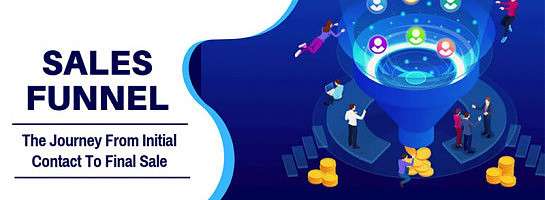How Blogs And Sales Funnels Relate To Each Other
What's the purpose of your blog?
Is it to ultimately drive visitors to your affiliate links while still providing valuable information?
And those affiliate links - do they simply go straight to the sales pages for whatever you're promoting?
If so, then you are throwing away money.
By sending people direct to sales pages, yes they may buy.
But then again, they may not.
And if there happens to be a page that can collect email addresses on the other end of your affiliate link, you've just handed that visitor over to the merchant.
If that visitor eventually buys, but after your cookie times out, you lose the commission.
And you can never market to that person again (unless they're a regular visitor to your website).
On the other hand, the merchant you sent them to, can crank up his email marketing to promote to them again and again because they signed up to his email list.
Isn't it better to capture that lead yourself, before you send them off to the product sales page through your affiliate link?
This is one way to add subscribers to your list and be able to repeatedly promote offers to them.
It's making the most of the traffic that visits your website.
The simple way to do this is to slap up a squeeze page on your site using the code snippet your autoresponder service will provide to you when you creat opt-in forms.
And then, after you get the email address, simply redirect the visitor to the offer.
The more sophisticated way is to build a sales funnel.
Your blog content warms them up to the offers you're presenting to them and links in your content send them to much nicer looking squeeze pages than your autoresponder can provide.
You can also create a sequence of pages your visitor goes through after they sign up.
That can be as simple as a single Thank You page, or maybe a sequence of lessons talking about the features and benefits of the particular product you're promoting, or a fully-fledged membership site.
Building more than that front-end squeeze page becomes problematic if you only rely on the code your autoresponder gives you.
That's why sales funnel software was invented.
It makes creating and managing sales funnels both organized and easy.
Clickfunnels was really the first company set up to address this specific need.
No longer did online businesses have to hire expensive web developers to create and maintain their sales funnels.
Now, even non-techies could put sales funnels together using drag 'n' drop.
And for the creationally challenged, there were hundreds of page templates to choose from and tweak, making things even easier.
Clickfunnels is a tool aimed at online businesses.
Affiliate marketers, at least the serious ones, are also running online business, but usually at a lower level than small companies.
The problem with Clickfunnels for those on a tight budget is its price.
The basic account costs $97/mth.
And this has limitations on how many funnels and pages you can build.
If you want unlimited everything and access to additional features, the Pro level account is $297/mth.
Ouch!
There are other less expensive ways to build sales funnels and squeeze (landing) pages as I outlined in this blog post.
But if you don't want to clutter up your blog with a sales funnel plugin and the pages it builds, here are 3 low-cost sales funnel software systems to check out.
Clickfunnels has its place but it can be overkill for those starting out in building their own funnels.
No tool is ever perfect and you need to weigh up which one best meets your needs and budget.
Funnels are all about converting email subscribers into customers.
You can think of them as a surgical strike in comparison to the shotgun approach of a blog post.
That's not to say blog posts are not important.
They are.
In fact they are the front door to a funnel, not the saqueeeze page as you might think.
Unless you're driving very targeted people directly to your squeeze page, this will be cold traffic.
They don't know you, have no reason to trust you and what you say on that squeeze page.
So it's harder to convince them to hand over their email addresses.
With a blog post, you warm up your traffic to what you're promoting.
Review a product or talk about the benefits of using it and how it will make their lives easier.
You get a chance to talk to your readers, put some personality into your content and resonate with them by talking about how you were in a similar situation and how this product worked for you.
You've now formed a relationship with that reader. Yes, it may be a tenuous one, but that's all you need to start with.
If they feel like you're not trying to hard-sell them on something, they'll be more predisposed to checking out your recommendations and in handing over their email address.
Using sales funnels is just a more efficient way of marketing and of getting the most out of the traffic that visits your blog.
And why you should have a...
Recent Comments
1

Thanks for this concise information on funnels, Gary! I'm bookmarking this for future reference!